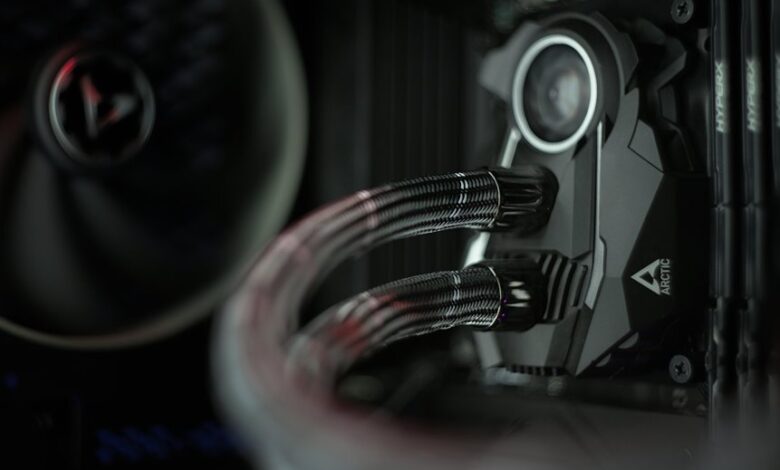Designing High-Performance Workflows 3716280111

Designing high-performance workflows requires a systematic examination of organizational processes. It involves identifying inefficiencies that hinder productivity and mapping out effective strategies for improvement. Teams must harness technology and automation to streamline operations while fostering a culture of collaboration. Performance measurement is crucial for ongoing enhancement. As organizations navigate these complexities, they must remain adaptable to thrive. The upcoming sections will explore methods to achieve these objectives and their implications for sustainable growth.
Understanding Workflow Fundamentals
Understanding workflow fundamentals is essential for organizations seeking to enhance efficiency and productivity.
Effective workflow mapping allows teams to visualize processes and identify key tasks. By implementing strategic task prioritization, organizations can allocate resources judiciously, ensuring that critical activities receive the necessary attention.
This foundational knowledge empowers teams to operate with greater autonomy, ultimately fostering an environment conducive to innovation and improved performance.
Identifying Bottlenecks and Inefficiencies
Identifying bottlenecks and inefficiencies is a critical step in optimizing workflows and enhancing overall productivity.
Conducting a thorough bottleneck analysis allows organizations to pinpoint specific areas hindering performance. By leveraging efficiency metrics, teams can measure workflow effectiveness and uncover patterns that contribute to delays.
Addressing these issues strategically fosters an environment where freedom of operation leads to increased output and innovation.
Leveraging Technology for Automation
Embracing technology for automation transforms traditional workflows and amplifies productivity.
By integrating advanced automation tools, organizations can achieve significant process optimization, reducing manual tasks and minimizing errors.
This strategic approach not only streamlines operations but also liberates employees to focus on higher-value activities, fostering innovation and enhancing overall efficiency.
Ultimately, leveraging automation cultivates an environment conducive to sustainable growth and adaptability in a dynamic marketplace.
Encouraging Team Collaboration and Communication
Effective team collaboration and communication are critical components of high-performance workflows.
Establishing open communication channels and integrating collaborative tools can significantly enhance information sharing and engagement among team members.
Additionally, regular team meetings serve as a strategic platform for aligning objectives and fostering a culture of collective problem-solving.
Open Communication Channels
Open communication channels serve as the backbone of effective team collaboration, significantly enhancing overall workflow efficiency.
By fostering transparent communication, teams can establish robust feedback loops that facilitate quick problem-solving and innovation.
This openness not only encourages idea sharing but also empowers individuals, allowing them the freedom to express thoughts and contribute meaningfully.
Ultimately, this leads to a more engaged and productive work environment.
Regular Team Meetings
Regular team meetings are a critical component of fostering collaboration and communication within a team.
These gatherings can be strategically utilized to enhance productivity through:
- Structured meeting agendas that guide discussions.
- Establishing feedback loops to refine team processes.
- Encouraging open dialogue to promote innovative ideas.
Collaborative Tools Integration
The integration of collaborative tools significantly enhances team collaboration and communication, serving as a backbone for modern workflows.
By leveraging various collaborative platforms, organizations can foster an environment of innovation and responsiveness.
Ensuring tool compatibility across systems is crucial, as it allows seamless data sharing and reduces friction, ultimately empowering teams to operate with greater flexibility and efficiency in achieving their objectives.
Measuring Performance and Continuous Improvement
While organizations strive for high-performance workflows, measuring performance and fostering continuous improvement remain critical components of success.
To achieve this, they should focus on:
- Establishing clear performance metrics to assess workflow efficiency.
- Implementing data-driven improvement strategies to identify areas for enhancement.
- Encouraging a culture of feedback and adaptability to sustain ongoing development.
Such actions empower organizations to refine workflows continuously.
Case Studies: Successful Workflow Transformations
Although many organizations face unique challenges in their workflow processes, several case studies exemplify successful transformations that can serve as models for others.
Notably, companies implementing targeted transformation strategies demonstrated significant workflow success by optimizing communication channels and automating repetitive tasks.
These strategies not only enhanced efficiency but also empowered employees, fostering a culture of innovation and adaptability within their respective environments.
Conclusion
In summary, designing high-performance workflows is crucial for organizations aiming to stay ahead in a competitive landscape. By identifying bottlenecks, leveraging technology, and fostering collaboration, teams can streamline operations and enhance productivity. The adage “a stitch in time saves nine” aptly encapsulates the importance of proactive measures in workflow optimization. Through performance measurement and continuous improvement, organizations not only address current inefficiencies but also pave the way for sustainable growth and adaptability in an ever-changing environment.




